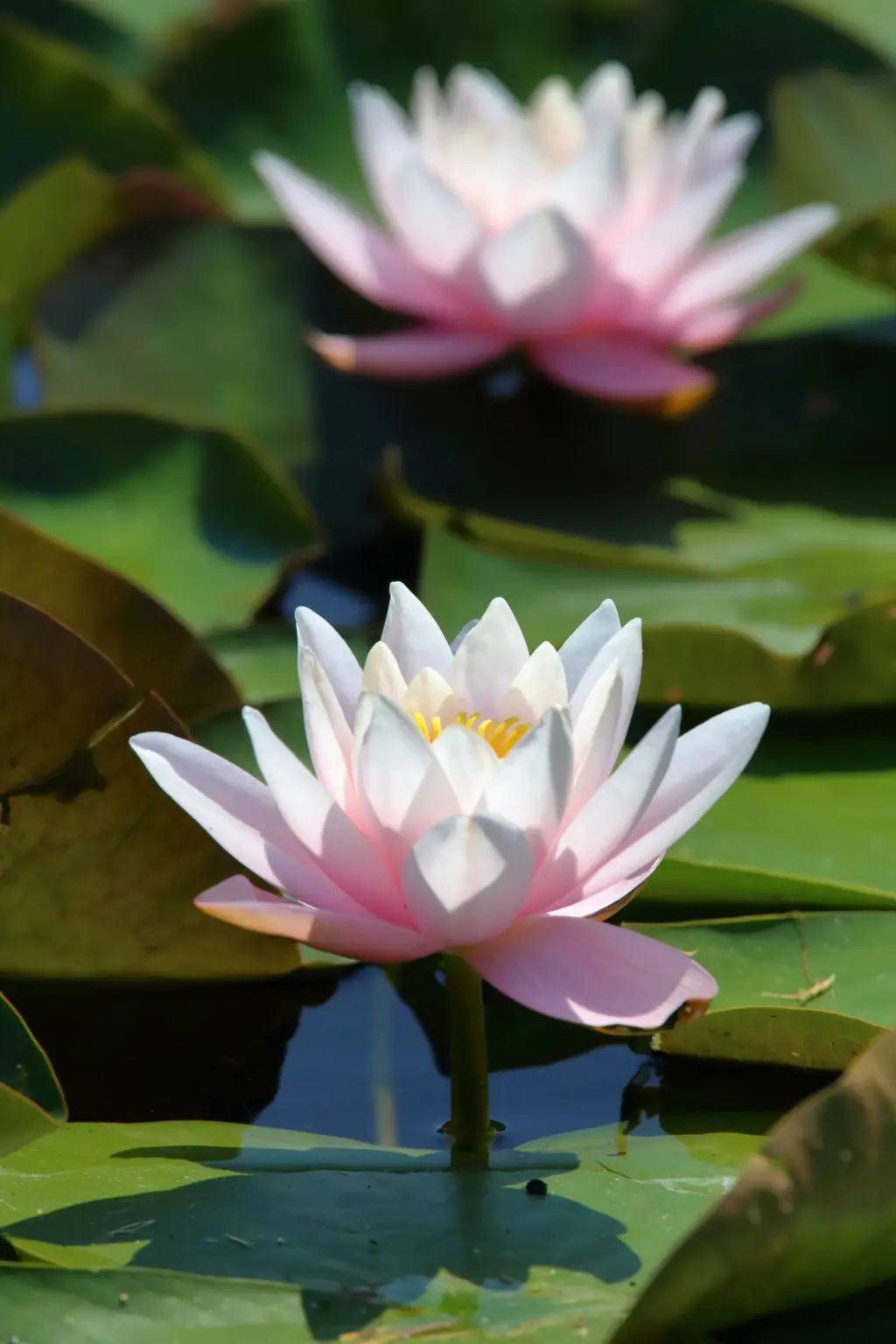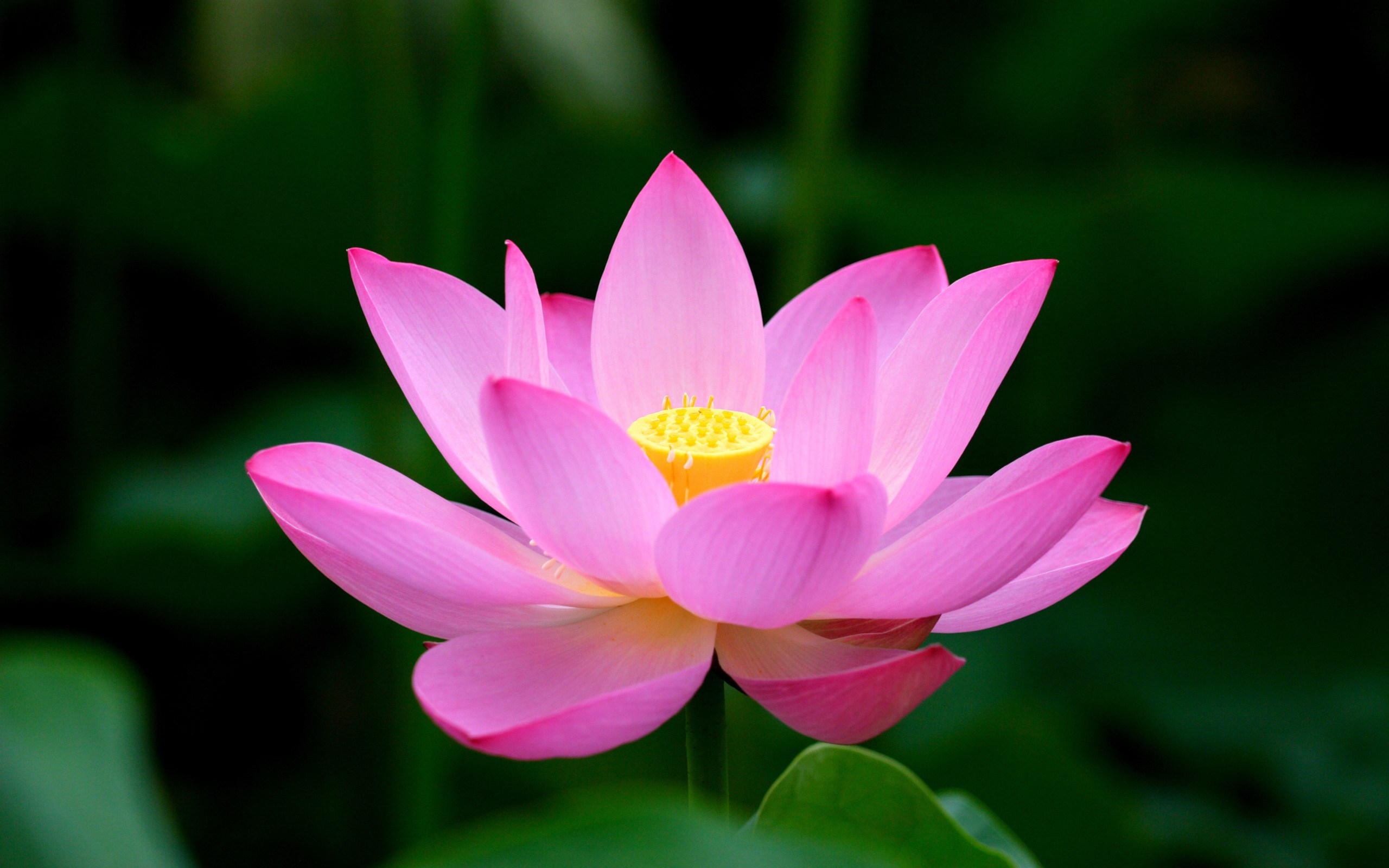The Timeless Allure of the Lotus: Symbolism, Biology, and Cultural Significance

The lotus flower, with its elegant form and captivating beauty, has held a prominent place in human culture for millennia. More than just a pretty bloom, the lotus is a potent symbol of purity, enlightenment, rebirth, and resilience, deeply entwined with religious, artistic, and philosophical traditions across the globe. From ancient Egypt to modern-day design, the lotus continues to inspire and captivate, its story woven into the fabric of human history.
A Botanical Marvel: Understanding the Lotus Plant
The term "lotus" is often used loosely, but in botanical terms, it generally refers to members of the Nelumbo genus, specifically Nelumbo nucifera (the sacred lotus, Indian lotus, or bean of India) and Nelumbo lutea (the American lotus or yellow lotus). These are aquatic perennial plants native to Asia and North America, respectively.
The lotus is characterized by its striking features:
- Rhizome: The plant anchors itself with a robust rhizome, a horizontal underground stem that stores nutrients and allows the plant to spread. This rhizome is also edible and commonly consumed in Asian cuisine.
- Petioles and Leaves: The lotus boasts long, sturdy petioles (leaf stalks) that can reach several feet in length, allowing the leaves to rise above the water’s surface. The leaves themselves are large, circular, and often covered with a waxy coating that causes water to bead up and roll off, a phenomenon known as the "lotus effect." This self-cleaning property contributes to the lotus’s association with purity.
- Flowers: The lotus flower is undoubtedly its most iconic feature. Borne on strong stalks, the flowers are typically large and fragrant, with multiple layers of petals in shades of pink, white, yellow, or red. They bloom in the morning and close in the evening, a daily cycle that adds to their mystique.
- Seed Pod: After the flower fades, it develops into a unique seed pod, a conical structure with embedded seeds. These pods are often dried and used in decorative arrangements.

The lotus is a resilient plant, thriving in muddy waters and often enduring harsh conditions. This adaptability further contributes to its symbolic association with perseverance and overcoming adversity.
The Lotus in Ancient Cultures: A Tapestry of Meaning
The lotus has held profound significance in various ancient cultures, each imbuing it with unique meanings and associations:

Ancient Egypt: In ancient Egypt, the blue lotus (Nymphaea caerulea) was revered as a symbol of creation, rebirth, and the sun god Ra. Its daily blooming and closing mirrored the sun’s journey across the sky, and it was frequently depicted in art, architecture, and religious ceremonies. The lotus also represented Upper Egypt and was associated with fertility and regeneration.
Hinduism: In Hinduism, the lotus is considered a sacred flower, representing purity, beauty, prosperity, and spirituality. It is associated with various deities, including Lakshmi (the goddess of wealth and prosperity) and Brahma (the creator god). The lotus symbolizes the potential for spiritual awakening, as it rises from the muddy waters of the material world to bloom in pristine beauty.
Buddhism: The lotus is perhaps most strongly associated with Buddhism, where it is a central symbol of enlightenment, purity of body, speech, and mind. It represents the journey of spiritual awakening, rising from the muddy waters of suffering to reach the clear light of enlightenment. Different colors of lotus flowers in Buddhist art hold specific meanings, such as white representing purity, pink representing the Buddha himself, and red representing love and compassion.

The Lotus in Art, Literature, and Design: A Continuing Legacy
The lotus continues to inspire artists, writers, and designers across the globe. Its elegant form and symbolic weight make it a powerful motif in various creative expressions:
Art: The lotus is a recurring theme in painting, sculpture, and decorative arts. From ancient Egyptian tomb paintings to contemporary Buddhist art, the lotus is depicted in a variety of styles and contexts, often symbolizing spiritual growth, enlightenment, or divine beauty.
Literature: The lotus flower appears in numerous literary works, often used as a metaphor for purity, beauty, or spiritual awakening. In Homer’s Odyssey, the lotus-eaters offer the protagonist’s crew a tempting fruit that induces a state of blissful oblivion, highlighting the flower’s association with detachment and escape.
Architecture: The lotus motif has been incorporated into architectural designs for centuries. From the lotus-shaped domes of Indian temples to the lotus-inspired roof of the Lotus Temple in Delhi, the flower’s elegant form lends itself to creating visually stunning and spiritually evocative structures.
Design: The lotus flower is a popular motif in contemporary design, appearing in everything from jewelry and textiles to furniture and graphic design. Its graceful lines and symbolic associations make it a versatile and appealing element in a wide range of applications.
The Lotus Effect: Biomimicry and Innovation
Beyond its aesthetic and symbolic value, the lotus flower has also inspired scientific innovation. The "lotus effect," the self-cleaning property of lotus leaves due to their unique surface structure, has been studied extensively and applied in various fields:
Self-Cleaning Surfaces: Researchers have developed coatings and materials that mimic the lotus leaf’s surface structure, creating self-cleaning surfaces for textiles, building materials, and even medical implants.
Water Harvesting: The lotus effect has also inspired the development of water harvesting technologies, allowing for the efficient collection of water from the air.
Cultivating the Lotus: Bringing Beauty Home
While the lotus is often associated with grand temples and serene gardens, it is possible to cultivate these beautiful plants at home, even in smaller spaces:
Choosing the Right Variety: Select a lotus variety that is suitable for your climate and the size of your container. Dwarf varieties are ideal for smaller ponds or tubs.
Container and Soil: Plant the lotus in a large, watertight container filled with heavy clay soil. Avoid using potting mix, as it is too light and will float.
Water and Sunlight: Lotus plants require plenty of sunlight (at least 6 hours per day) and should be kept consistently submerged in water.
Fertilization: Fertilize the lotus regularly during the growing season with a slow-release aquatic fertilizer.
By following these guidelines, you can enjoy the beauty and serenity of the lotus in your own backyard.
Conclusion
The lotus flower is more than just a pretty bloom; it is a symbol of enduring power and profound significance. Its journey from muddy waters to pristine beauty has captured the human imagination for millennia, inspiring art, literature, religion, and scientific innovation. Whether admired for its elegant form, revered for its spiritual symbolism, or studied for its unique properties, the lotus continues to captivate and inspire, a timeless testament to the enduring power of nature and the human spirit.
FAQ about Lotus
Q: What is the difference between a lotus and a water lily?
A: While both are aquatic plants, they differ in several key aspects. Lotus flowers and leaves typically rise above the water’s surface, while water lily flowers and leaves float on the surface. Lotus leaves are circular and have a waxy coating (the lotus effect), while water lily leaves are often notched. Lotus seed pods are conical with embedded seeds, while water lily seed pods are round.
Q: What is the symbolic meaning of the lotus flower?
A: The lotus flower is a potent symbol of purity, enlightenment, rebirth, and resilience. It represents the journey of spiritual awakening, rising from the muddy waters of suffering to reach the clear light of enlightenment.
Q: Is the lotus flower edible?
A: Yes, various parts of the lotus plant are edible, including the rhizome (root), seeds, leaves, and petals. They are commonly used in Asian cuisine.
Q: Can I grow a lotus flower at home?
A: Yes, you can grow lotus flowers at home, even in smaller spaces. Choose a suitable variety, provide a large container, heavy clay soil, plenty of sunlight, and regular fertilization.
Q: What is the "lotus effect"?
A: The "lotus effect" refers to the self-cleaning property of lotus leaves due to their unique surface structure. This property has inspired the development of self-cleaning surfaces and water harvesting technologies.
Q: What are the different colors of lotus flowers and what do they symbolize in Buddhism?
A: In Buddhism, different colors of lotus flowers hold specific meanings:
- White: Represents purity of mind, body, and spirit.
- Pink: Represents the Buddha himself and his divine qualities.
- Red: Represents love, compassion, and the heart.
- Blue: Represents wisdom, knowledge, and the victory of the spirit over the senses.
- Purple: Represents mysticism and esoteric knowledge.
Q: How do I care for a lotus plant in the winter?
A: In colder climates, you need to protect your lotus plant during the winter. You can either move the container to a sheltered location, such as a garage or shed, or bury the container in the ground. Make sure the rhizome is protected from freezing temperatures.
Q: Are there any medicinal uses for the lotus plant?
A: Traditionally, various parts of the lotus plant have been used in traditional medicine for their potential health benefits, including antioxidant, anti-inflammatory, and anti-diabetic properties. However, more research is needed to confirm these benefits.

